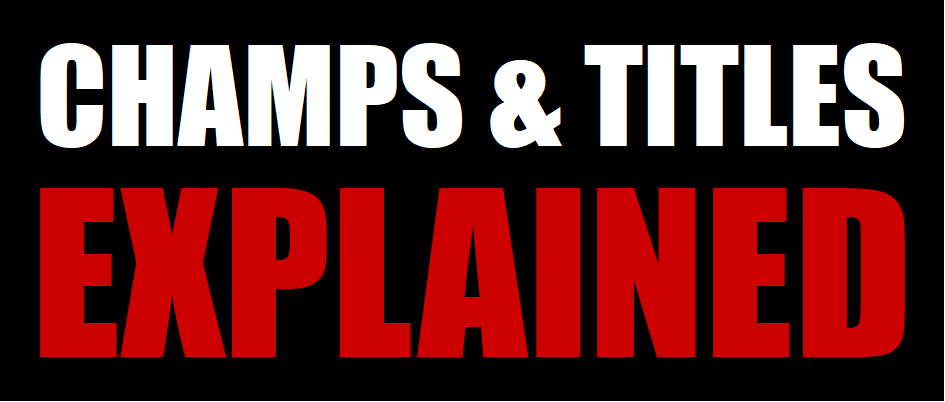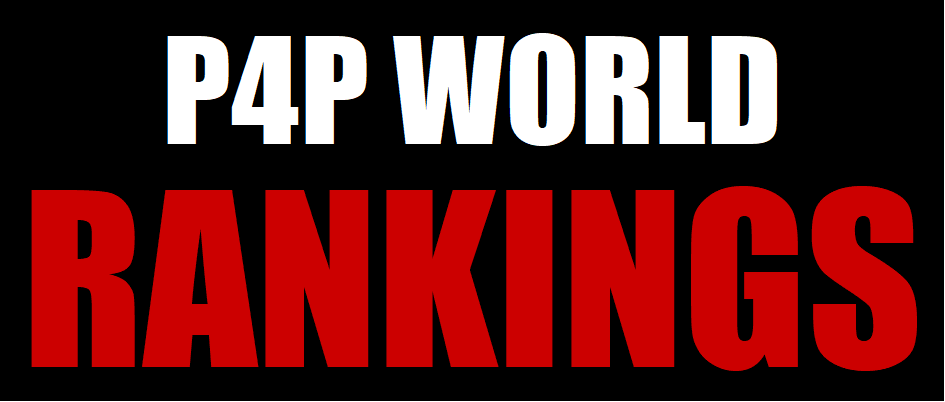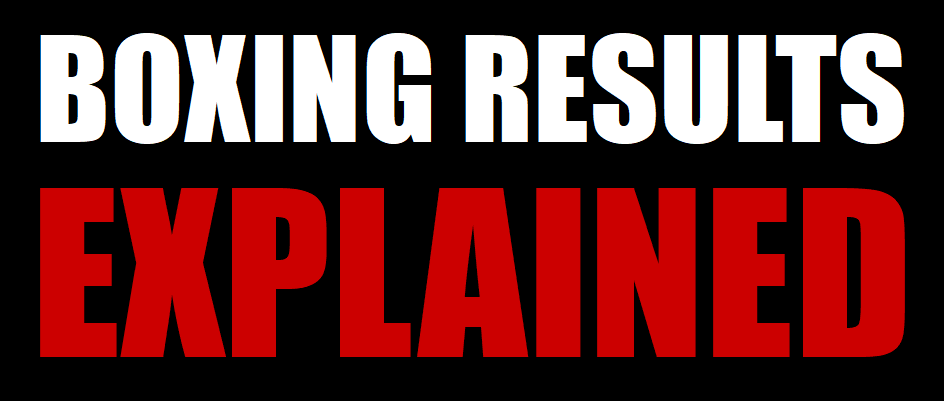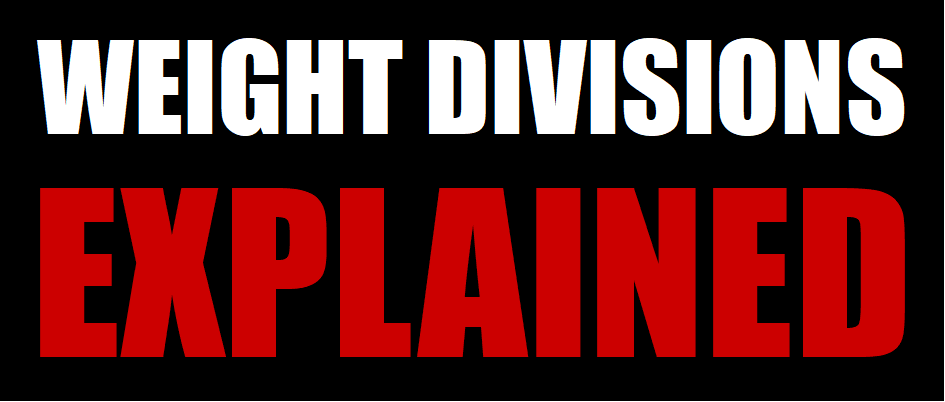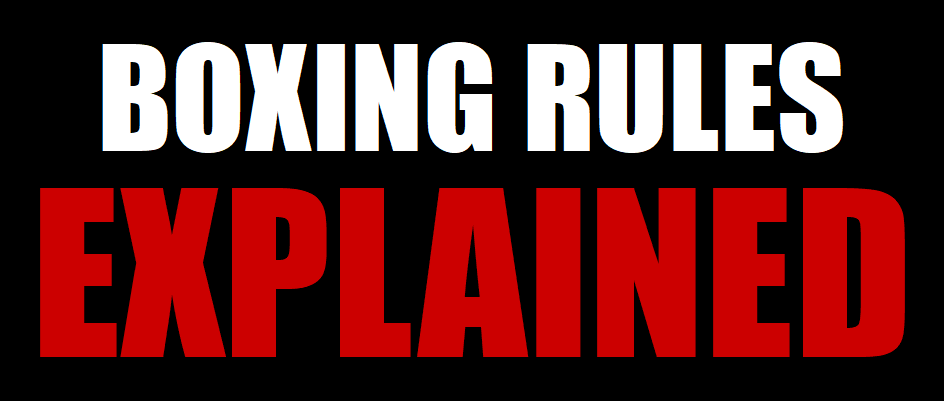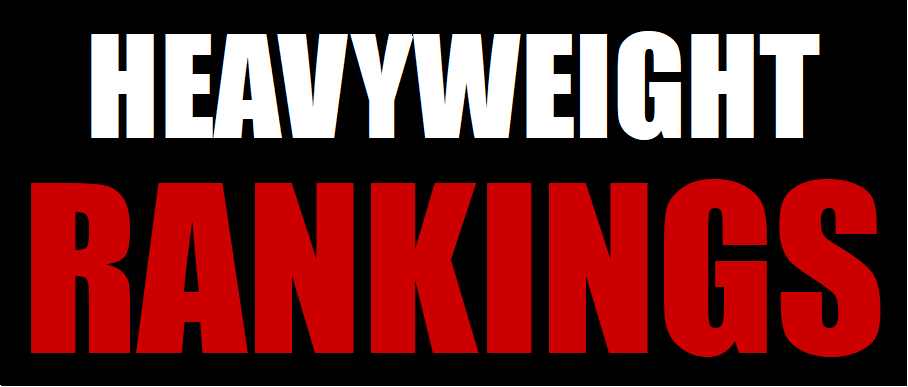A complete boxing words, terms & phrases glossary featuring every piece of lingo – here covering P, Q and R. Just part of our huge Boxing FAQ.
Select a glossary section from below:
Words & Terms: P
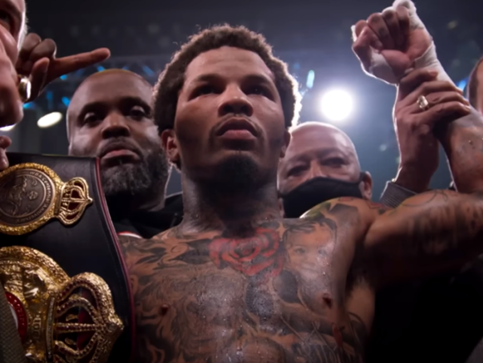
Palooka
Refers to a boxer past his prime who’s likely to lose and deeply struggle in the twilight of his career.
Paper Champion
A boxing champion considered to be of the weaker variety, usually because they had an easy route to the championship or have been consistently defending against soft challengers.
Parrying
A defensive maneuver whereby a boxer swipes away an opponent’s punches. Boxers may also push their glove toward a shot to, for example, ‘catch’ a jab.
Paw
When a boxer throws out a soft jab to his opponent’s face. This acts not so much as a punch, but more so a range-finder, for boxers trying to establish distance and measure up for power shots to land.
Pay Per View (PPV)
Big mainstream fights often take place on television/streaming networks such as DAZN, ESPN and Sky, in order to generate greater revenue from audiences. Marquee names and promoters have capitalized greatly from PPV sales, which can fetch in excess of $50 per household.
Peek-a-Boo (defense)
A defensive high guard; boxers ‘peek’ over the top of their gloves while protecting the jaw and face. Mike Tyson famously implemented a very effective peek-a-boo style.
Perfect Record
A boxer’s record that is yet to suffer a loss. The pressure to retain unbeaten records is greater than it has even been, with the ‘0’ becoming a vital modern era marketing tool.
Performance Enhancing Drugs (PEDs)
Illegal substances used to improve a boxer’s performance. Athletes caught with PEDs in their system, typically from A and B samples provided, are usually given temporary suspensions ranging from months to years. Some uncertainty surrounds the topic, however, since it has been said that slight traces of banned properties can be present in some ‘legal’ supplements.
Whatever the case, boxers flagged by agencies such as UKAD and USADA, almost always deny having willingly taken an illegal substance. A notable case of PEDs in boxing involved Ryan Garcia following his victory over Devin Haney.
Picked Off
An overmatched boxer may be ‘picked off’ by an opponent with a greater skill set and willingness to let his hands fly.
Pinweight
The lightest weight class a woman can compete at in the female professional ranks, with a limit of 101 lbs/46kg. See our Women’s Boxing Rankings here.
Pitty-Pat Punches
Soft, ineffective punches that are unlikely to damage and discourage an opponent, and may prove difficult to impress the judges with.
Phantom Punch
A punch that dubiously ends a fight via knockout. Some spectators may question the punch’s legitimacy, and therefore contemplate whether the fight itself was fixed. Muhammad Ali’s rematch with Sonny Liston featured perhaps the most famous ‘Phantom Punch’ – or did it?
Philly Shell
Also known as the ‘Shoulder Roll’ style, this is a type of guard revered for its defensive and counterpunching advantages. A boxer’s chin (orthodox) is usually tucked in behind his left shoulder, his left forearm horizontally positioned at his waist, and his right hand by the jaw. Through rotating the upper body (tucking the chin behind either shoulder when under attack) a boxer can prove difficult to catch with a clean punch.
With either forearm always at the waist, his body is also protected. Modern era boxers like Floyd Mayweather and Pernell Whitaker demonstrated Philly Shell excellence, often frustrating and neutralizing aggressive boxers. Poor execution of a Philly Shell can prove detrimental, however, as was the case with Andre Berto’s efforts versus Robert Guerrero in 2012.
Play Possum
Refers to a tactical bluff where a boxer acts hurt/tired in an effort to make his opponent rush in. The boxer playing possum could then, for example, look to catch his opponent with a counter-punch.
Plodder
A slow-moving, flat-footed boxer who generally struggles with energetic, fleet-footed opponents who move in and out of range. Plodders are not known for ‘keeping on their toes’.
Or the danger-zone, punch-zone. The pocket refers to the area between boxers where both can be hit. Confident counter-punchers may deliberately inhabit this space to land shots. Boxing technicians like Terence Crawford and Vasyl Lomachenko often look extremely comfortable in the pocket, and are considered experts of range perception.
Pod Index
A system that evaluates the worldwide performance of ringside judges at professional boxing bouts. The Pod Index was designed to find objectivity in a scoring system renowned for being subjective, and measures occasions were a scorecard is consistent with the two others working the same fight.
Point Deduction
When a referee deducts a point from a boxer following an infraction of boxing’s rules. For instance, a boxer may continuously throw rabbit punches or excessively clinch.
Points Decision (PTS)
A decision reached from one judge, often being the referee in contests lasting 8 rounds or less, and often in non-title UK bouts. You can find the meaning of every kind of decision in our Boxing Results Explained Guide.
Post-Fight Interview
In mainstream fights, particularly those on Pay Per View, a TV/streaming network host will interview both boxers to gain insight into how they felt about the fight and their performances.
Power Punches
Simply refers to a boxer’s hardest punches, usually excluding the jab and anything thrown without venom.
Pound for Pound (P4P)
The Pound for Pound rankings are a somewhat mythical list of elite boxers, whose ability is ranked regardless of their weight division. Publications and sanctioning bodies hold their own rankings which typically differ.
P4P rankings measure the skill level, ability and overall achievements of a boxer, and should not be confused with individual weight division rankings. You can see Boxing Base’s P4P Rankings here.
Press Conference
An event staged where members of the press, and public in big fights, can photograph and ask boxers questions in the build up to a bout. Promoters, managers, trainers and undercard boxers are also typically present.
To publicize a fight, press conferences may be staged in different states or even countries. Floyd Mayweather and Canelo Alvarez travelled to various states in both North and South America to promote their lucrative 2013 showdown.
Pressure Fighter
A fighter who relentlessly marches forward and throws hard shots, usually in high volume. Throughout history, Pressure Fighters have matched up stylistically well with boxers, given their contrasting styles. Advantages of a pressure style include generating anxiety in an opponent and forcing them to abandon their gameplan, therefore controlling the tempo.
Prize Fight
Any fight whereby boxers earn a payday; most professional fights guarantee a ‘purse’ to each combatant.
Professional
A boxer in the professional (prize fighting) ranks, most likely progressing from the Amateurs, though this is not a prerequisite.
Promoter
An individual or company in charge of arranging, advertising and putting on professional boxing events. In addition to setting up a fight’s main event and undercard, promoters have to work with boxers, managers, boxing commissions and officials.
Protected Fighter
Often a valuable fighter promoters or managers keep out of harm’s way for as long as possible. This is to maximize their marketability and earnings before being matched up with a dangerous opponent. For instance, Golden Boy Promotions’ Canelo Alvarez was once considered a ‘protected fighter’ based on his limited early opposition.
Promoters/managers will often matchup their prospect with ‘blown-up’ opponents (those who have bulked up to make the weight) or aging big names (once-elite fighters). Since unbeaten boxers can draw huge crowds, it’s no wonder careful matchmaking takes place.
Protective Cup
A cup-like protective garment worn to protect a boxer’s groin area from low blows.
Pulling a Magoo
A judge who hands in a dubious scorecard may be said to have ‘pulled a Magoo’, referring to the sight-challenged cartoon character Mr Magoo. A referee who makes a bad call during a fight can also fit the bill.
Pulling Away
A defense maneuver that simply involves leaning back the head, and or stepping back out of range to avoid an attack. Pulling away is one of the simplest defensive moves often taught to novices starting out in the sport.
Pull One’s Punches
If a boxer pulls their punches, it means they are not producing full power. This may be due to improper technique or fear of being caught by a counterattack.
Puncher
Often characterized as a boxer who possesses fight-ending power, sometimes from just a single punch. Punchers are of course renowned for ending most of their fights by knockout, as is the case with boxers like Artur Beterbiev and Naoya Inoue.
Puncher’s Chance
An overmatched boxer’s only chance of winning may seemingly be that of a ‘puncher’s’. For example, a critic may comment: “John Smith doesn’t have the reflexes of old, but still has a puncher’s chance of beating the champion.” Boxers like Kiko Martinez have been testament to this in their later years.
Punching Air
When a boxer cannot successfully land his shots on an opponent and literally hits the air as a result.
Punch Drunk
Refers to a boxer who, due to overstaying his welcome in boxing, has taken too many blows to the head and may be uncoordinated and or slurring his words as a result. He may be suffering from Dementia Pugilistica, a neurological disorder.
Punched-Out
When a boxer ‘punches himself out’. For instance, a boxer may have to hold back on his offense after exhausting himself by throwing a barrage of punches. George Foreman famously punched-out himself against Muhammad Ali, with his depleted energy contributing to his knockout defeat.
Punch Output
Measures the amount of punches a boxer throws. For instance, boxers like Joe Calzaghe threw many punches during a fight, often averaging around 1200.
At the other end of the scale, a boxer may be more economical and cautious with his output, throwing far less. Statistically, the lighter the boxer (such as those between Bantamweight and Lightweight) the more punches are thrown.
Punch Perfect
This refers to an emphatic victory whereby a boxer demonstrated brilliant boxing craft. For example, when Floyd Mayweather fought Robert Guerrero, his near flawless performance could be described as such.
Purse
The ‘prize money’ boxers are guaranteed following a contest. This can range from hundreds, to thousands, to millions depending on a boxer’s mainstream appeal. Purses, if contractually agreed upon, can be supplemented by extra revenues such as those from Pay Per View sales.
Words & Terms: Q
Queensberry Rules
A set of rules that govern modern era boxing to create order and sporting fairness for combatants. Though they have been developed since, the original rules were endorsed by the Marquess of Queensberry during the 18th century. Most, if not all professional bouts, implement Queensberry Rules, though they can vary slightly.
Queer Street
The figurative place a boxer’s mind inhabits after being dazed following a knockdown or damaging blow.
Words & Terms: R
Rabbit Punch
An illegal punch thrown to the back of a boxer’s head during a bout. These typically occur accidentally, often during heated close-quarter exchanges or when a boxer is caught from an awkward angle while turning away from a punch.
Range
At the start of a bout, boxers often ‘feel each other out’ with jabs to establish ‘range’. In other words, the correct distance necessary to land punches.
Reach
Refers to a boxer’s arm span which can play a big factor in fights. Having the longer reach tends to be advantageous, with shorter boxers often struggling to get ‘inside’ a long-armed opponent’s jab.
Referee
The third man in the ring responsible for ensuring rules are adhered to. If rules are breached, he has the power to issue warnings, deduct points, disqualify a boxer, and also call a No Contest if necessary. You can see a full list of boxing rules and boxing result meanings here.
Referee’s Instructions
The referee generally gives boxers his instructions (expected conduct) in their changing rooms shortly before a bout, and briefly reiterates them prior to the first bell.
Rehydration Weight
A boxer’s weight on fight night itself – 24 hours after the weigh-in. This extra weight gained is referred to as ‘rehydration weight’, often literally, as many boxers will have not only limited their food intake in the days leading up to the weigh-in, but also water.
Rematch
A second encounter between two boxers who have already shared the ring. Trilogies can occur between fierce rivals, and even quadrilogies.
Rematch Clause
Some fight contracts may feature rematch clauses, meaning that should Boxer A beat B, Boxer B must be granted another chance to even the score. Boxer B can choose to waive the enforceable rematch, however, as did Lucian Bute after suffering a dramatic TKO loss to Carl Froch.
Rest Period
An allotted respite between rounds of a bout, usually one minute in professional boxing.
Retired (RTD)
Following a punishing round or several, a boxer may voluntarily Retire himself from a bout. More commonly, however, is for his corner or a doctor to enforce that decision. While some boxers will accept the outcome, others may angrily protest it.
This was the case with Deontay Wilder, who went on to fire his trainer after being pulled out of a rematch with Tyson Fury.
Ring Announcer
Or the master of ceremonies. This person stands center ring and introduces boxers to the crowd. Fan-favorite Michael Buffer will likely be forever synonymous with his famous line “let’s get ready to rumble!”.
Ringside Doctor
A physician present who can assess a boxer’s wellbeing during rounds. Doctors monitor cuts, swollen eyes and signs of serious fatigue, and are usually first on the scene following a knockout. In many jurisdictions, sanctioned bouts (both amateur and professional) would be unregulated without doctors present.
Ring Walk
Or ring entrance. More than just a walk to the ring, this moment of spectacle is accompanied by music and sometimes large entourages. During this time, it could be said that the fight has figuratively already begun, with psychological warfare at play.
Showboating boxers such as Prince Naseem Hamed were carried in on thrones, while others may wear elaborate costumes or be accompanied by rappers.
Ring Generalship
Refers to how well a boxer asserts himself and controls the action in the ring. In other words, who is the boss! Boxers like Roman Gonzalez and Manny Pacquiao have great ring generalship, which often pays dividends should a fight go to the scorecards.
Ringside
The immediate ring perimeter where officials, corner members and first few audience rows are situated.
RING title
A world championship title awarded by The RING magazine. Having existed since 1922, it carries clout with many serious boxing fans as belts can only usually be won by the publication’s top two-ranked contenders.
Roadwork
Refers to running or any type of training a boxer does on the road, which can involve flat and inclined. Floyd Mayweather would sometimes wear military-style boots during his sessions to build greater stamina and stronger legs.
Rolling
A defensive maneuver whereby a boxer ducks and moves under his opponent’s attack; the rolling boxer may throw a counter-shot shortly after or simultaneously. It can also refer to ‘shoulder rolling’ (see the ‘Philly Shell’ above).
Roll with the Punches
A term that describes how a boxer moves from side-to-side and under an opponent’s punches to avoid being hit.
Rope-a-Dope
A tactic famously used by Muhammad Ali whereby a boxer purposely languishes on the ropes in a bid to tire out an advancing opponent. Ali exhausted a very dangerous George Foreman using this method in 1974 en route to a KO victory.
Rough-Housing
A boxer may use rough-house tactics to throw off his opponent. For instance, many brawler-types try to physically overwhelm refined boxers in an effort to break their rhythm and gameplan. Shawn Porter demonstrated this effectively against Devon Alexander in 2013.
Round
Fights consist of segments known as ‘rounds’, typically lasting 3 minutes for men and 2 for women. Fights can be anywhere from 3 to 12 rounds, with championships set at 12.
Rubbery Legs
Following a knockdown/heavy blow, a boxer’s legs may appear to be jelly-like or ‘rubbery’ due to the affects of concussion or head trauma. A commentator may observe that “John Smith beat the count, but now has to survive the round on rubbery legs.”
RSC
Referee Stops Contest; a fight result used in Amateur contests by referees who need to stop a bout out of concern for a hurt boxer’s wellbeing. This is also sometimes recorded as RSCH (Referee Stops Contest due to Head blows).
RSCOC
Referee Stops Contest Outclassed. This is the most common of Amateur stoppage results, taking place when a boxer is overmatched and receiving a beating.
Rubber Match
The third matchup between two boxers. Typically, they were evenly matched during their first two bouts, and or have a fierce rivalry. Joe Frazier and Muhammad Ali’s third meeting was dubbed their ‘rubber match’ since the score was 1-1 going into the fight.
Select a glossary section from below:
Return to Boxing FAQ?

